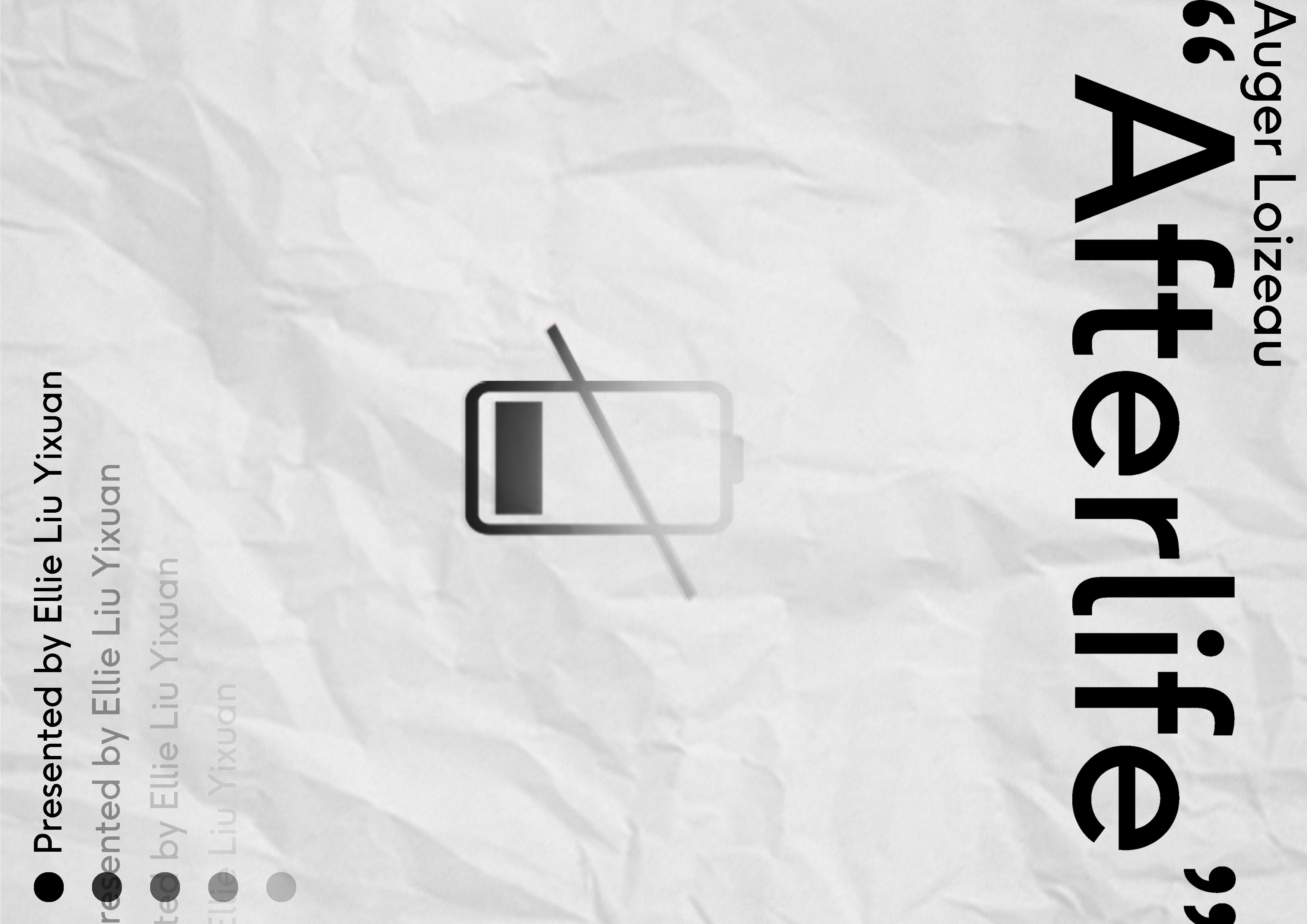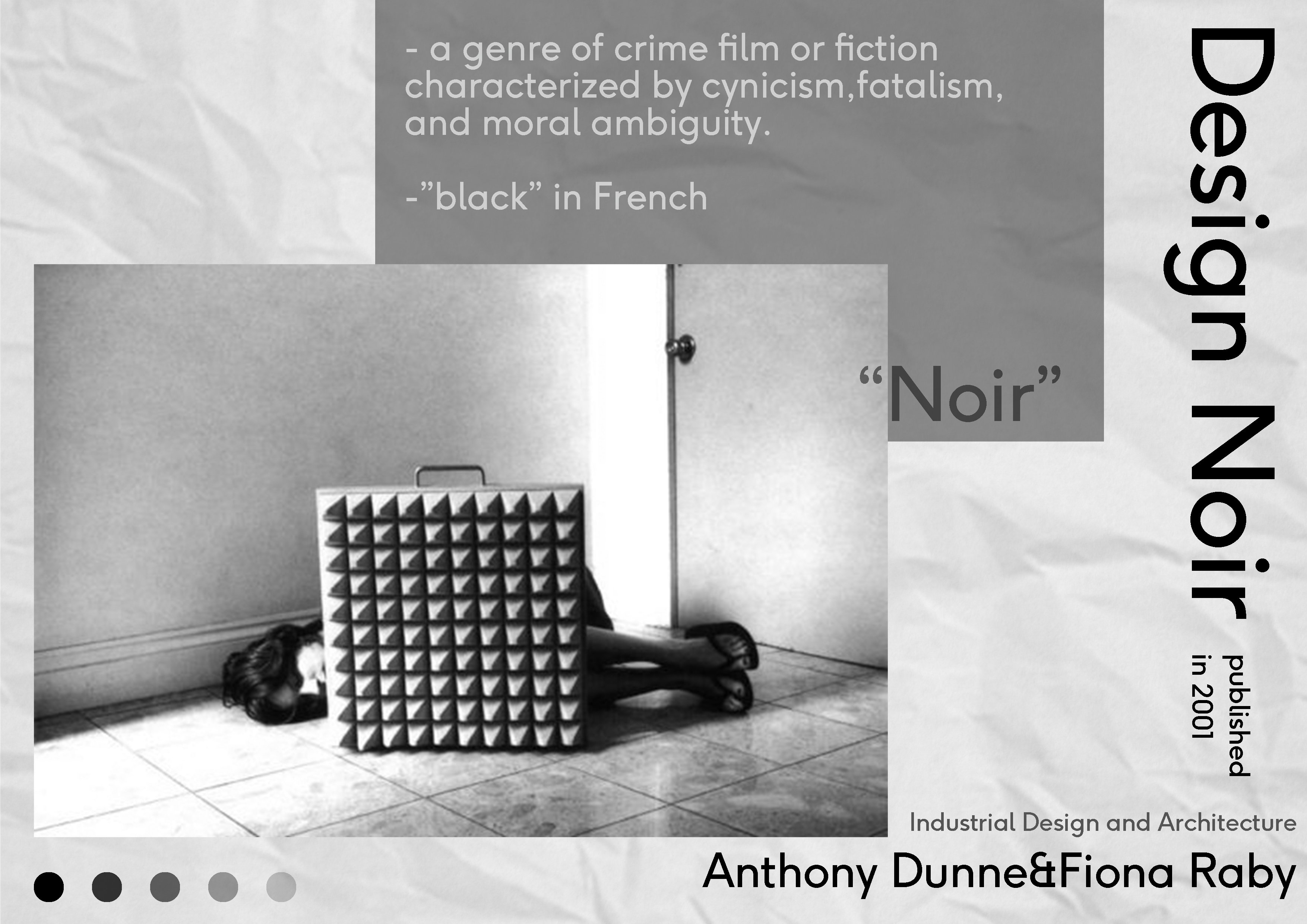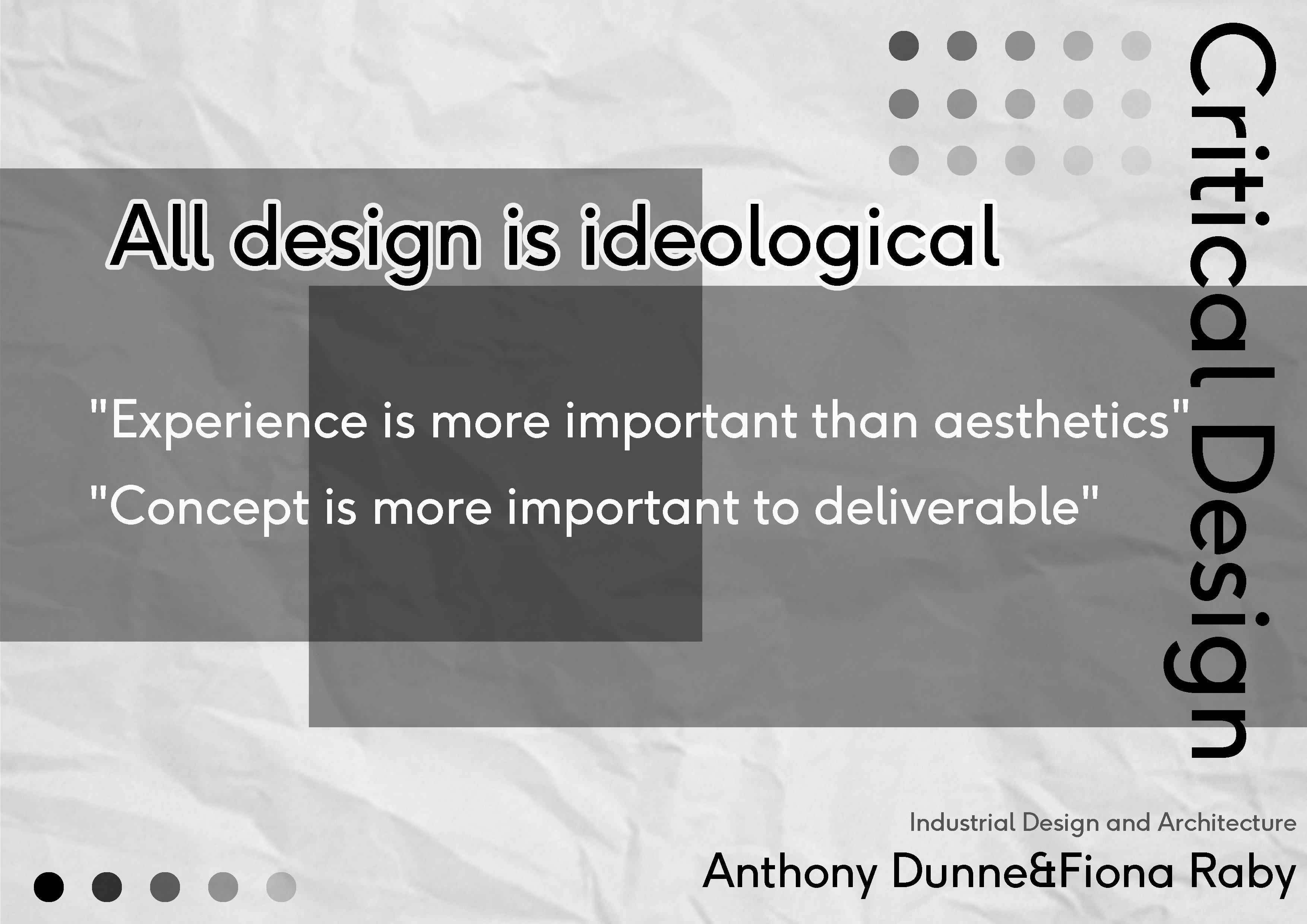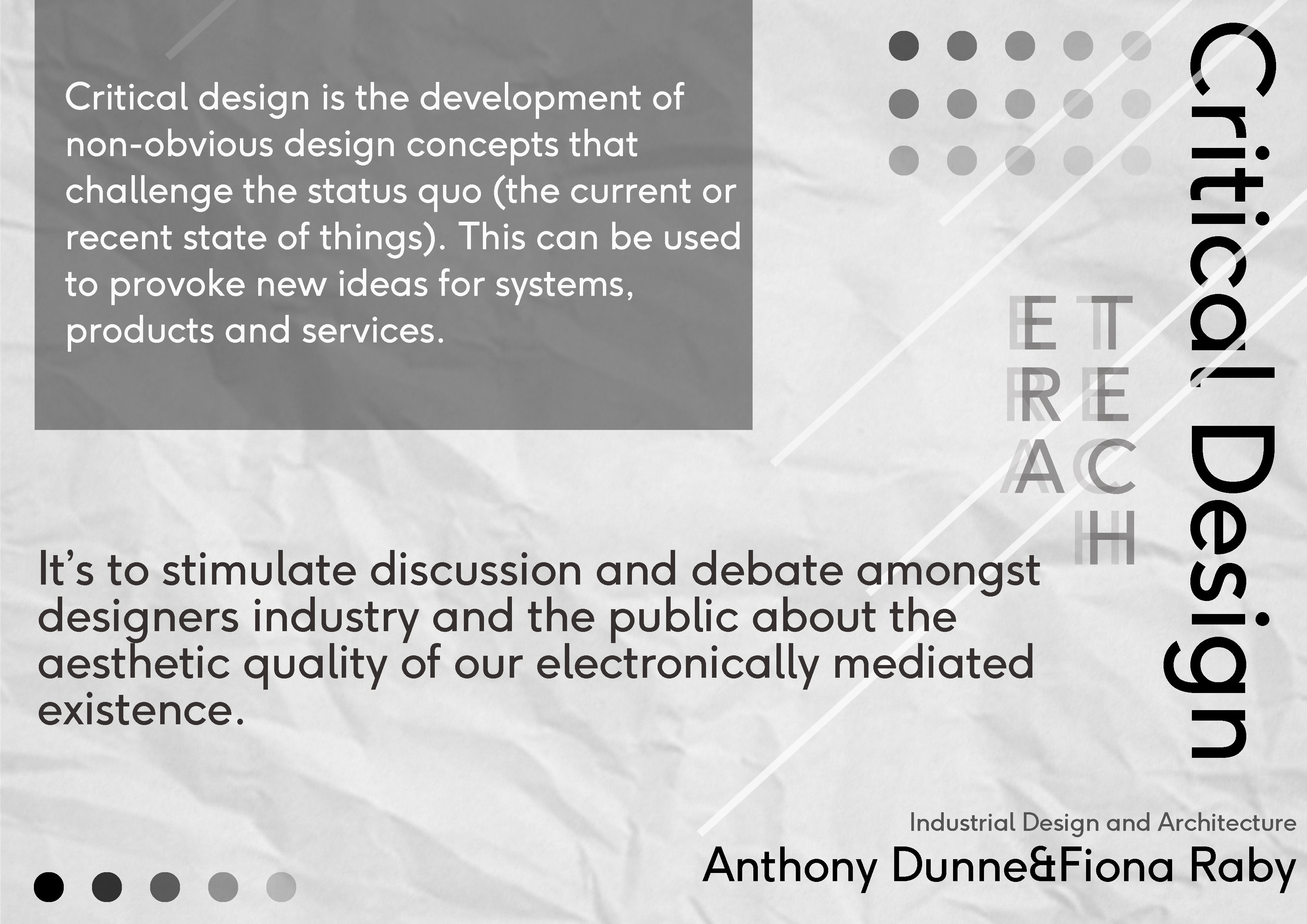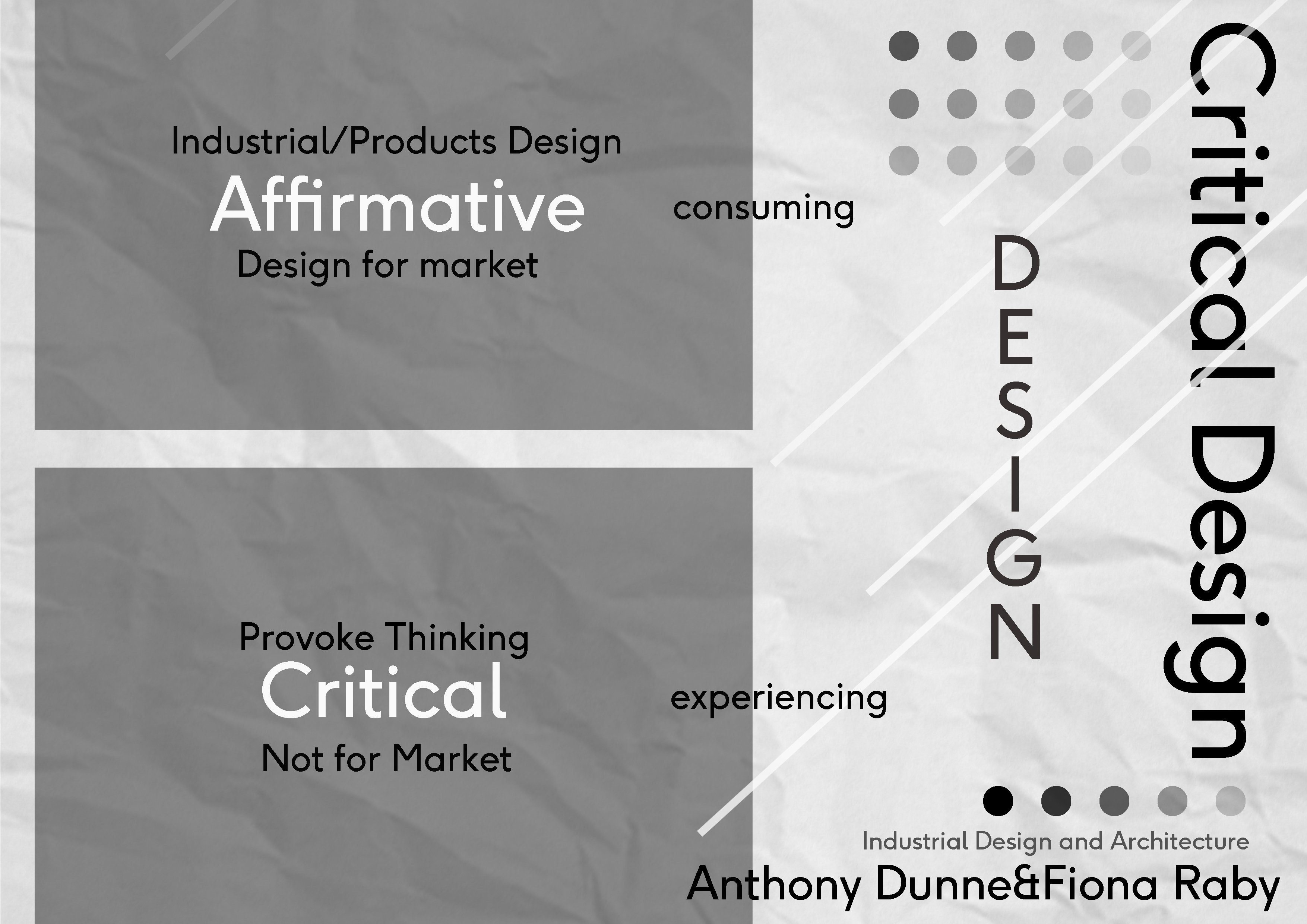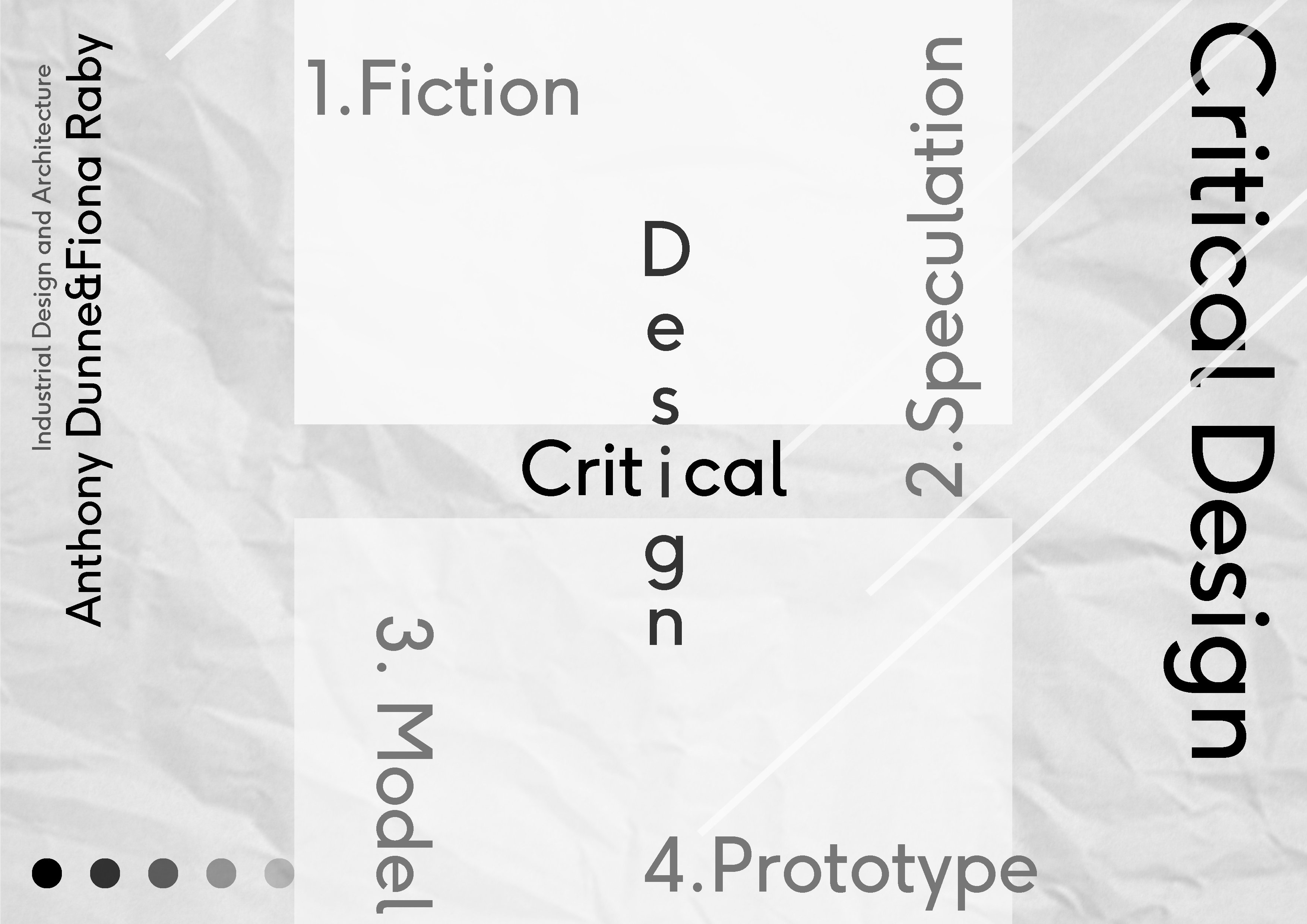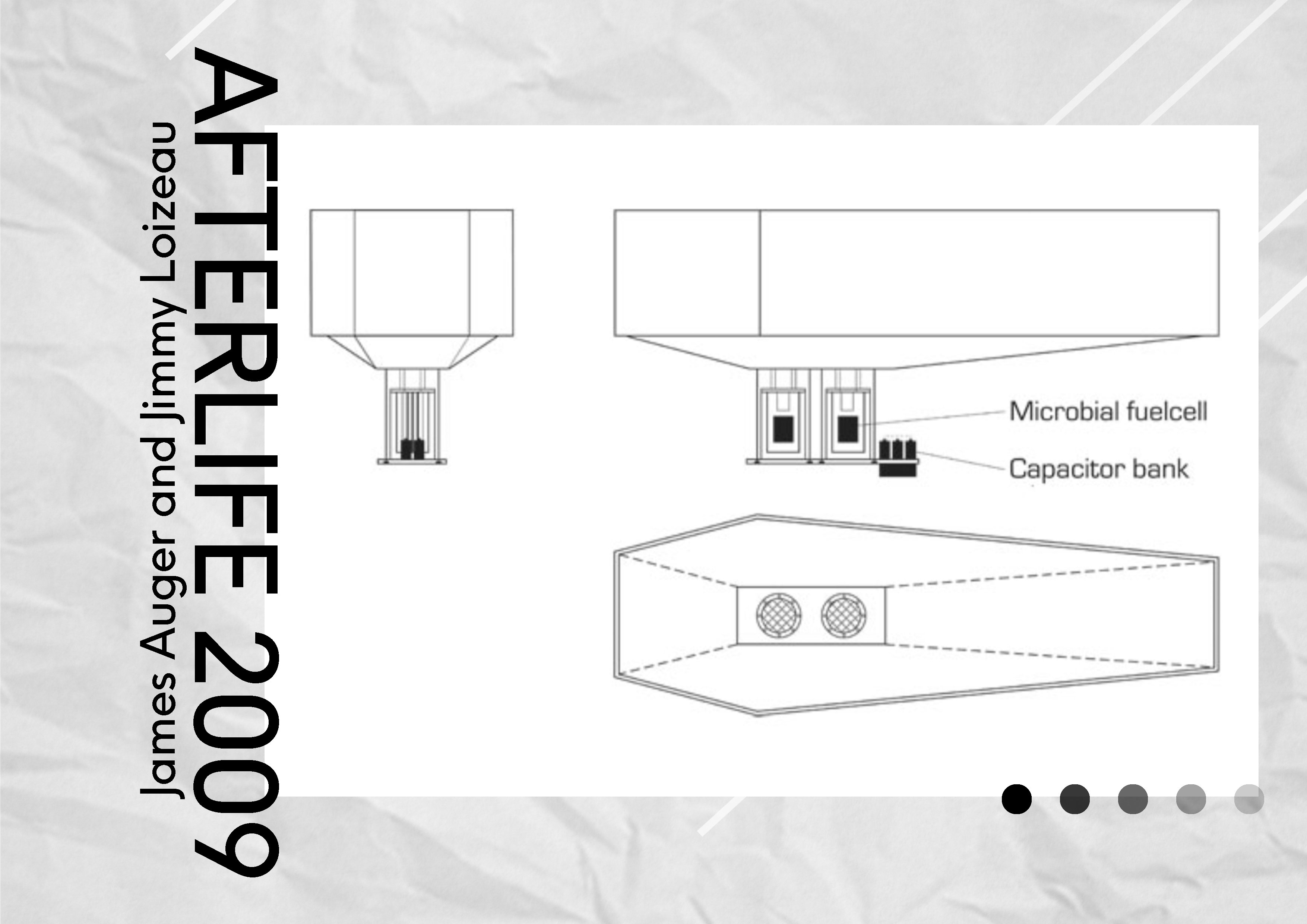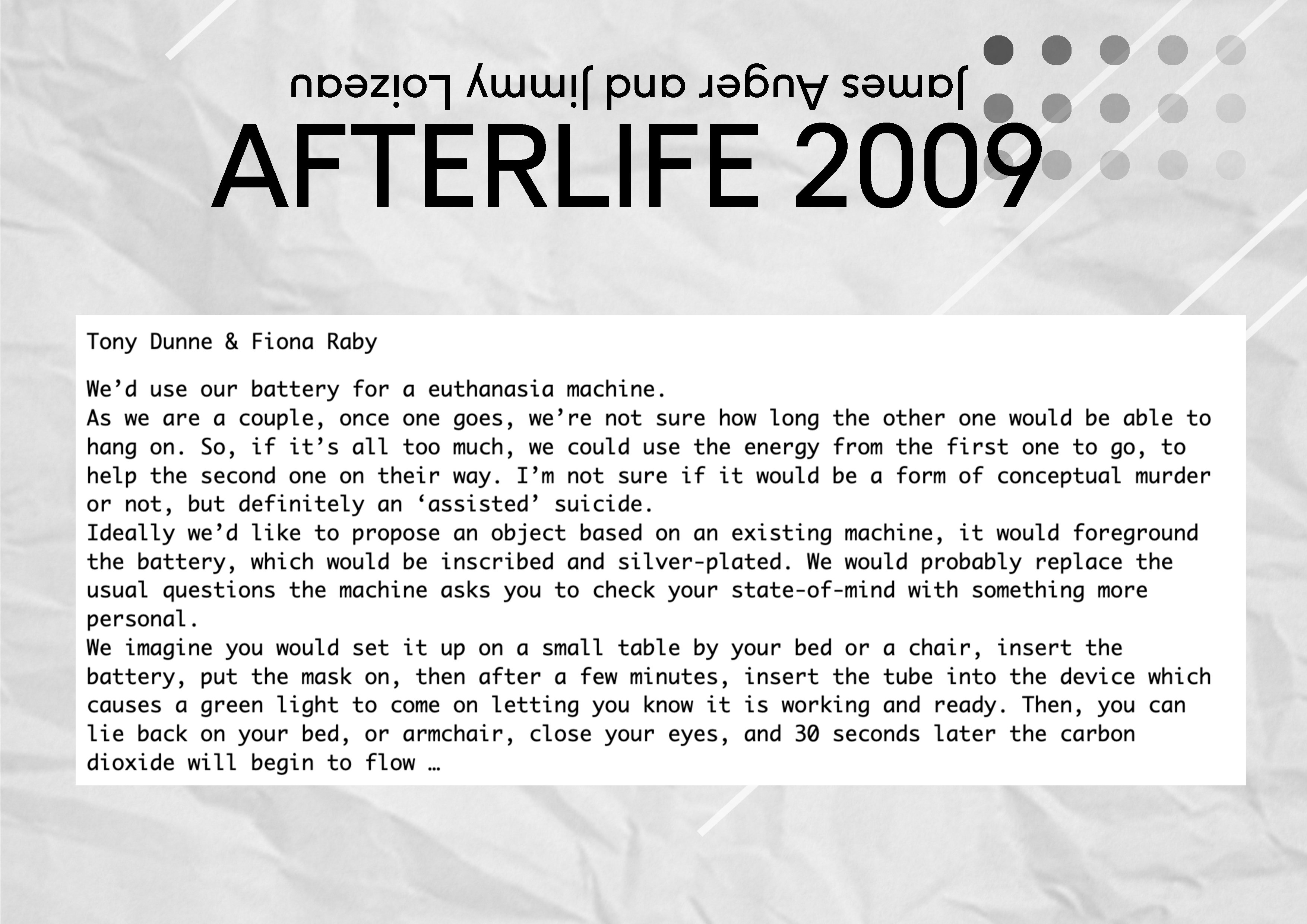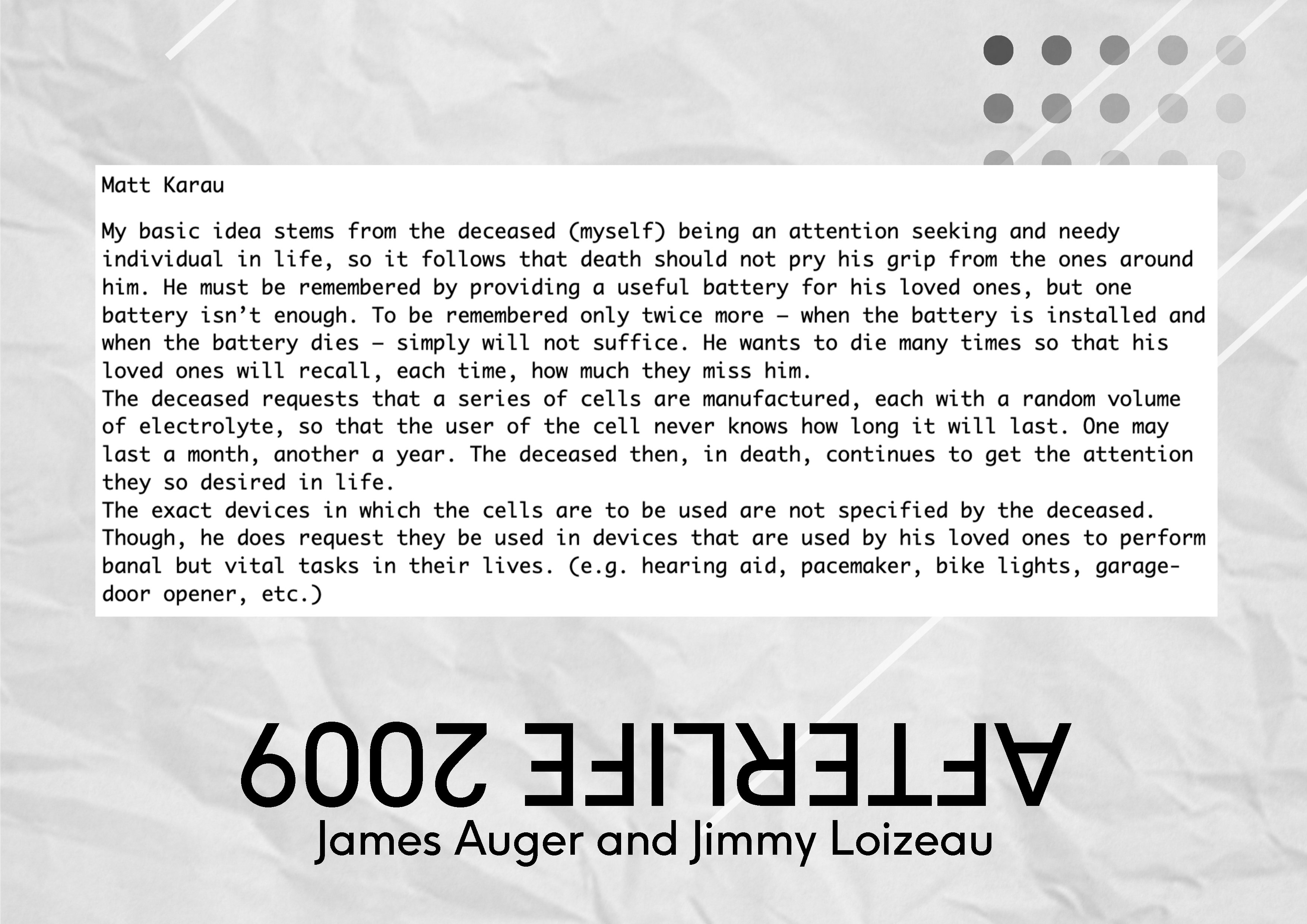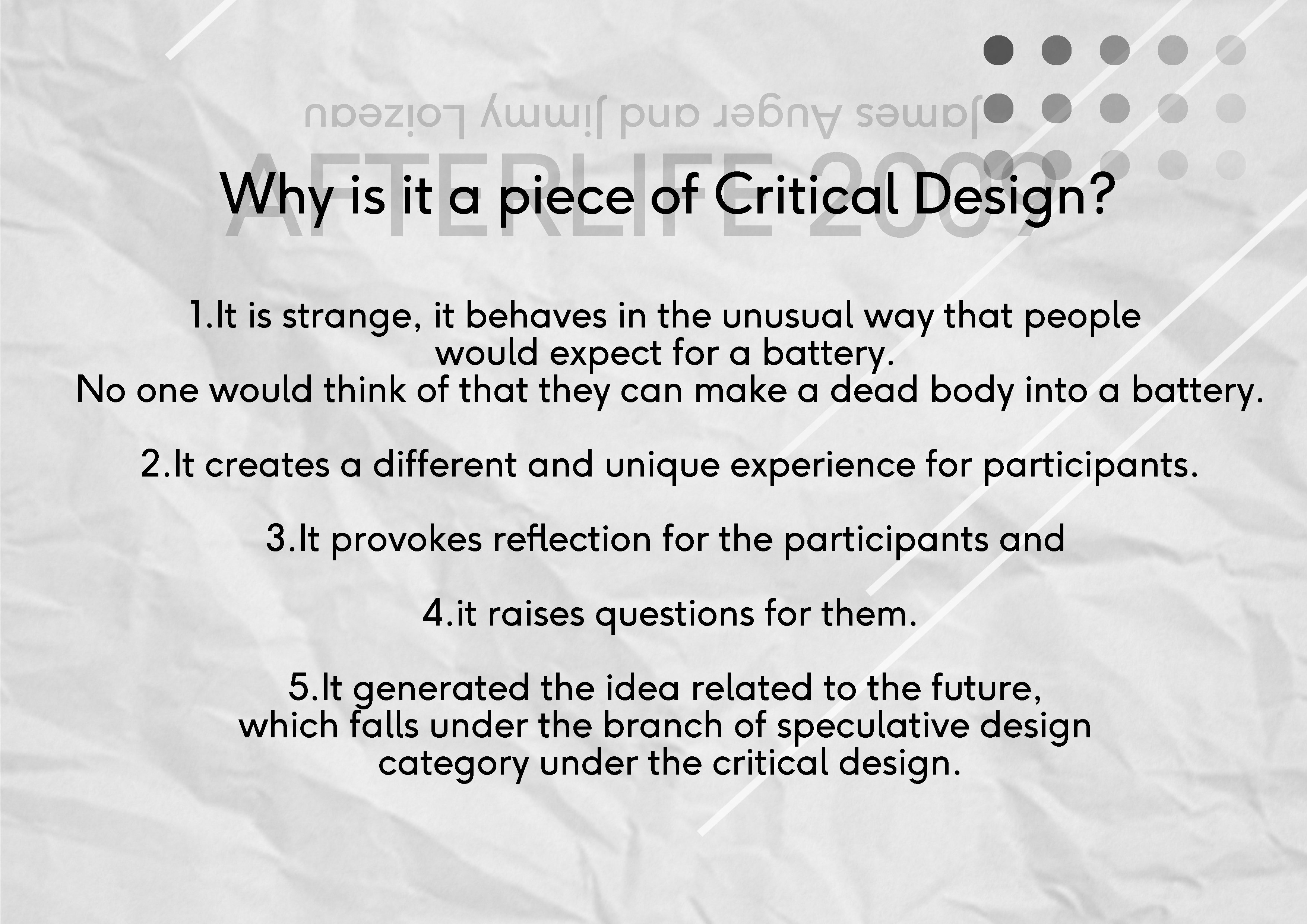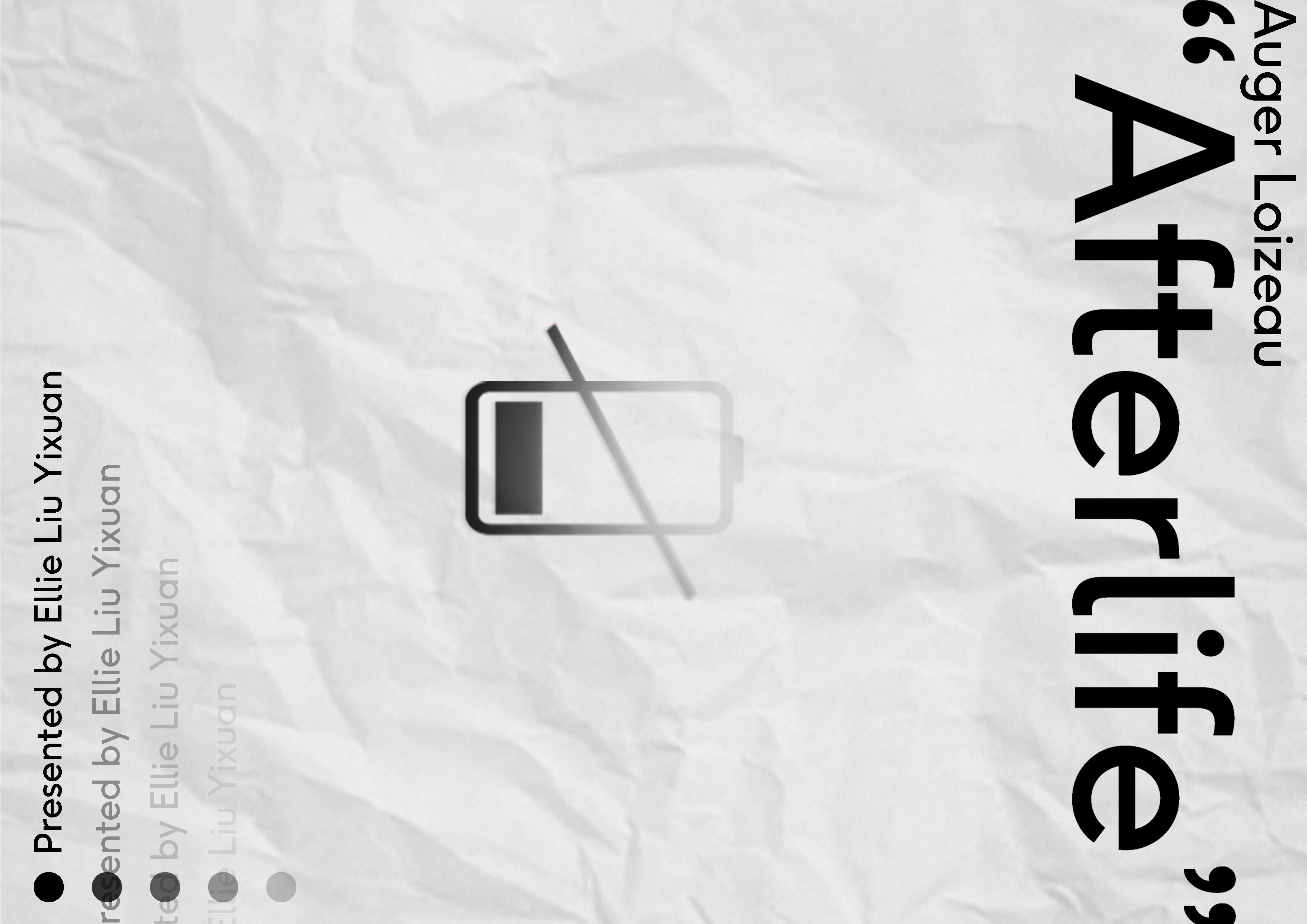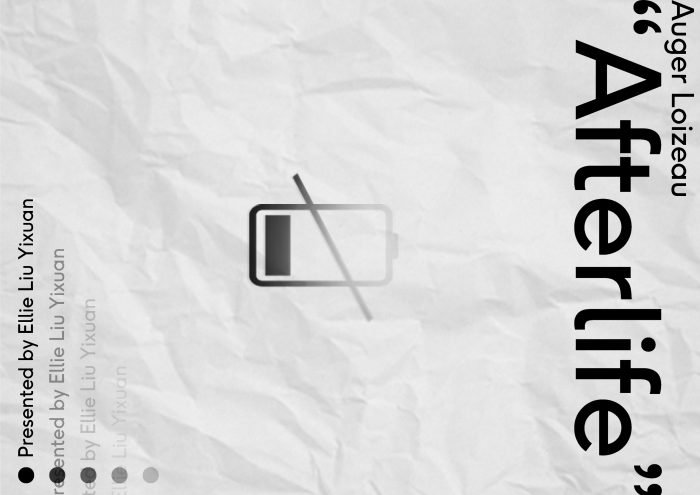
Presentation
Essay
Afterlife
Auger Loizeau
Design Noir
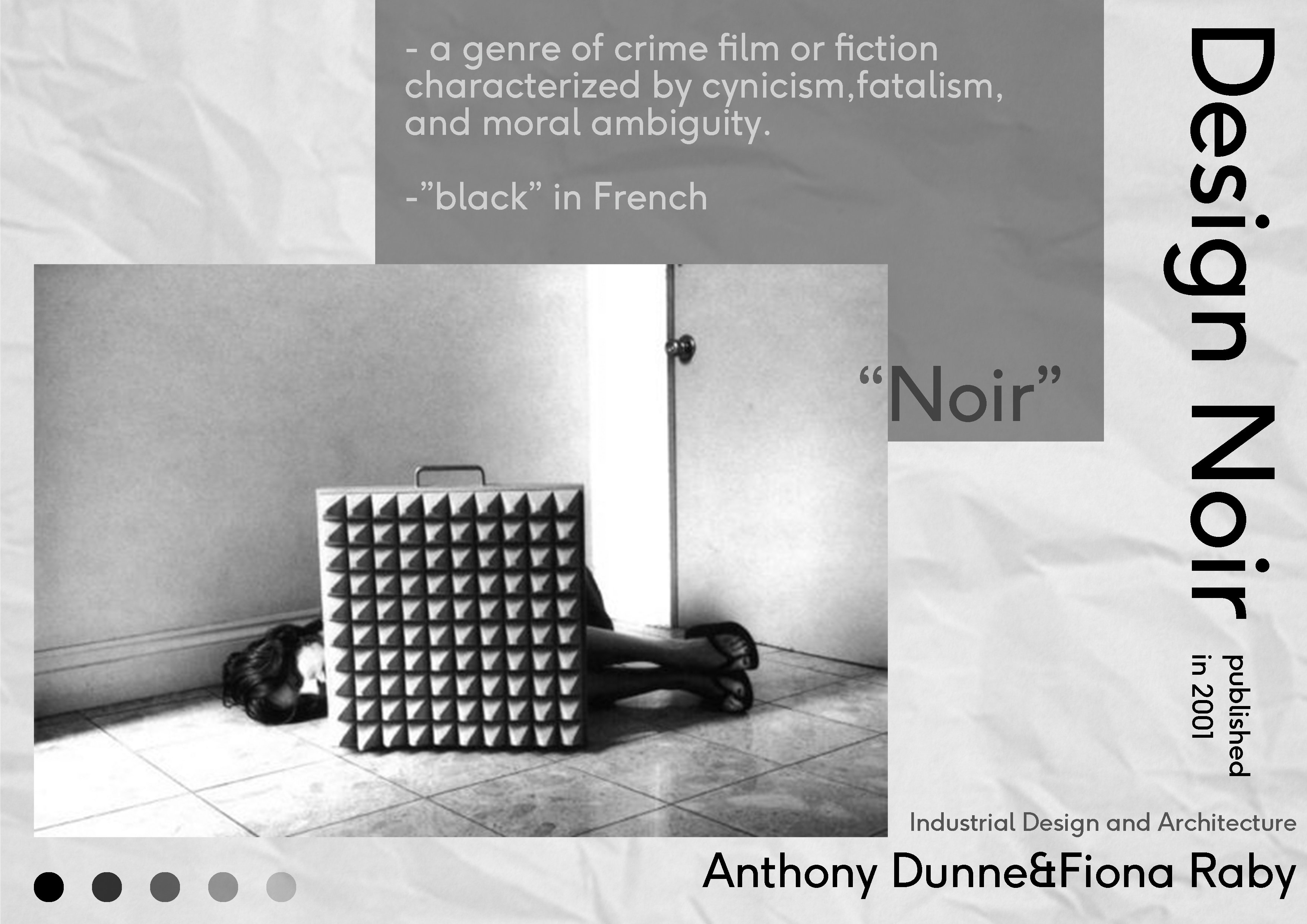 Dunne & Raby
Dunne & Raby
Afterlife is a piece of critical design work made by Auger Loizeau, which falls under the category of Design Noir, which means it is important to know the idea of Design Noir before looking into the artwork itself.
The Design Noir is the name of the book called Design Noir: The Secret Life of Electronic Objects, written by Anthony Dunne and Fiona Raby, who are the pioneers, founders and leaders in the Critical Design Movement. This book offers the reader a clear image of the Critical Design Movement within the current context of rapid technology change, especially for electrical products. Anthony studied Industrial design in RCA and Fiona Raby studied Architecture there, too.
Critical Design
“Experience is more important than aesthetics”
“Concept is more important to deliverable”
“Let’s call it critical design, that questions the cultural, social and ethical implications of emerging technologies. A form of design that can help us to define the most desirable futures, and avoid the least desirable.”– Anthony Dunne & Fiona Raby
Critical design is the development of non-obvious design concepts that challenge the status quo(the current or recent state of things). This can be used to provoke new ideas for systems, products and services.
Danne and Raby state that all design is ideological and all the designs fall into two categories-affirmative and critical. Most design, especially industrial design, fall into the affirmative category, where designers design for a specific purpose to meet people’s expectation.
But nowadays, the development of parallel design activity is required to challenge industrial agendas. Because technology is developing rapidly, reflection and criticism should play an important role to explore other possibilities of the product, therefore provides a critique of the prevailing situation through designs that embody alternative social, cultural, technical or economic values.
Personally, I think Critical design is more of an attitude, the aim is to challenge people’s assumption of normal products, creating a different experience to provoke reflection and criticisms. It is to make the idea behind the design visible by creating the experience, here, the design became secondary, it is the medium of designer’s thought, the most important part of a successful critical design is the thinking and concept behind it.
But Why is critique so important in our technology era? To put it in a more understandable way, there is a quotation from the artists:
Anthony: I think as technologies become more complex and affect more people, they have the potential to create and also eliminate forms of social relations, possibilities for behaviour, and ultimately, what it means to be human. Therefore, we need to bring other disciplines into the process of developing new technologies. If only technologists and economists are in charge of the new developments, some profoundly human qualities might be in danger of being overlooked and thus written out of new technologies. Design can act as a catalyst here. We need alternative narratives – not just the motive of optimisation – driving technological development, and I think design can work with the humanities and liberal arts to develop these alternative visions. (from Virta Design Museum)
Therefore, the purpose of critical design is to
stimulate discussion and debate amongst designers industry and the public about the aesthetic quality of our electronically mediated existence(Anthony and Raby).
Art and the Market
What are some issues with design that has to be popular?
According to Thomas Frank(2001), it is believed that the market is the only reality and the “market populism” was formed, which means that the true desire of people was expressed by the marketplace. It seemed to me that if a product cannot fit in with the market, it is pretty much worthless and unreal, which would make the Critical Design Movement more difficult as it discouraged designers from doing something new, and time by time designers will be afraid to design something that is not desirable for the market.
In my opinion, the development of technology also helped the process of global capitalization, the role of the capital is highly valued which makes both customers and sellers focus more on the profit, which is the outcome, rather than the idea and concept behind the design. Another reason might be the problem of mass production. It is undeniable that it would take more time to do the critical design installation or art, and most of them cannot be mass produced. For most critical design, they take forms of prototypes, which makes it unsuitable for the need of the market.
Additionally, if the aim of the design is just to be popular and to make profits, the function may still be there but the idea, concept and communication would be vague, which in a way promoted consumerism.
For critical design, it does not aim for mass production or making profits, which to put it in a good way, it frees designers from the rules and restrictions from the market and sets no limitation to them, so they can create anything with their imagination.
Which can lead to my other two personal interpretations:
1. Designers and artists should take social responsibilities, which goes parallel with Anthony and Raby’s idea of doing non-commercial critical design to raise people’s awareness rather than simply making money.
2. In today’s context, art and science should not be considered as two separated subjects. I agree with Anthony and Rady’s understanding of the relationship between art and science. It is widely agreed that the development of human being was driven by technology, however, technology should be developed in a proper way and there are a lot of debatable scenarios about morality and humanity. For example the cloning technology. Technology can bring functional and physical improvement for human beings but its effect will only be fully expressed when collaborating with art, which takes care of the emotional and ethical aspect of life.
Additionally, the affirmative design is all about selling new products, without exploring and pushing the cultural and aesthetic potential and role of electronic products and services to its limits. This form of critical design is considered valueless and widely neglected by the public and the designers.
Forms of Critical Design
1-Fictions
How the True World Finally Became a Fiction is the idea proposed by Friedrich Nietzsche that myth and storytelling are of greater influence on modern society than direct experience of reality. The idea suggests that we may doubt our senses when it conflicts with fiction.
The theory can be extended to the common business observation that the story and culture surrounding a brand can be more important than physical realities such as product durability. It can also explain the tendency for ideas in science fiction to eventually become reality.
2-Speculations
It’s about problem-raising rather than problem-solving.
Speculating about the future. This can involve projections based on current trends or suggesting that current trends are about to suddenly end or reverse. Speculation can also involve thought experiments such as how the future will view current designs.
For example-Accelerating Change
Accelerating change is the idea that technology-driven social change is exponentially increasing. The idea stems from the observation that each decade appears to change at an increased rate. According to the theory, life changed more between 2000 and 2010 than between 1900 and 1910.
A prime example of accelerating change is the doubling of computing speed every 18 months that began in the 1960s explained by Moore’s Law. This, in turn, sparked a broad range of technological change including the commercialization of the internet and leaps forward in research in areas such as biotechnology.
3-Models
It is basically implement something in a new method. According to Simplicable, developing theories and models that challenge design conventions. For example, suggesting a completely new method to captured holograms that would improve quality if it could be implemented. As a design concept, implementation details can be completely omitted such that the design may be impossible or have disadvantages that would become clear to implementers.
4-Prototype
Critical designs may be developed as prototypes that are typically designed to challenge assumptions as opposed to a typical prototype that is intended to be a potential product. For example, an interior design that challenges conventional forms and design principles.
Afterlife(2009)
It is an example of critical design, it is the design for the mind and it aims to stimulate reflection. James Auger and Jimmy Loizeau were classmates in RCA, and they started to work with each other since 2001, when the Design Noir was published. They were both did MA in Design Products at RCA.
In this piece of work, they associated their design with the taboo topic- death.
There are many perspectives and beliefs on what happens to us after our lives on this planet come to an end.
When faced with our own mortality or that of a loved one, notions of what the afterlife may hold; whether it be in a spirit world such as heaven or reincarnated into another body or form, spiritual faith can offer great comfort and reassurance. This scientific research has yet to offer any tangible proof of continued existence, after death.
So in terms of comfort and reassurance what then is there for the grieving atheist?
When someone dies, their body will go back to the natural system, he may turn into wind, rain or the soil under the flower. By turning the chemical of the dead body into electricity of a battery, Afterlife offers the family a visible expression of their loved ones, creating a feeling that they are still with them and has a function, which means that they are still participating in their lives, too.
Why is it a piece of Critical Design?
- It is strange, it behaves in the unusual way that people would expect for a battery. No one would think of that they can make a dead body into a battery.
- It creates a different and unique experience for participants.
- It provokes reflection for the participants and it raises questions for them.
- It generated the idea related to the future, which falls under the branch of speculative design category under the critical design, and also made use of the current technology to change chemical of the body into the electricity. It is speculative because it is not for participants to use for now, but for later, when they die or when their loved one dies. It is also a prototype because they never got a real dead body to test whether the mechanics work or not. It is more like a concept at the proposal stage rather a real product.
- Additionally, it is also important to mention that the participants are not just the people who will die, but also their families. They can choose what their function is as an electrical object, but the actual users can decide the frequency and scenario when they are using it.
Part two of afterlife seems unrelated to part one at all, but if we can go behind the look of the two work, we will find out they are questioning the same concept: the existence of human being. Do we really exist? Do we leave our spirit in the world after death? Do we fall in love with somebody because of their smell? Was the smell born with us and acting like a unique attracting characteristic of the individual or do we tend to cover our original smell with some perfume to make us more attractive? What are we and what is real? There are some questions for all of the participants to think about, and each one will come with different answers, too. But it is undeniable that it also challenges our normal assumption in life, but part two is not that technically placed in the technology context. But in a way the general background is in the tech era too.
Anthony and Raby mentioned that for critical design, the little weirdness it’s the key because it needs to challenge people’s assumption of products. But it cannot go too far, if it is too strange, people may not use it at all. If it is not strange at all, people will see the product as normal. For the first part I think that most of the people would use it but for the second one, it is way too intimate and can also be irritating, which may get fewer participants compared to the first one.
In general, to me, I think afterlife is a good piece of art and design, it successfully achieved the goal of the critical design, which is to provoke and challenge assumptions of daily life electronic objects as well as giving out an opportunity to people to think about some moral issues.

